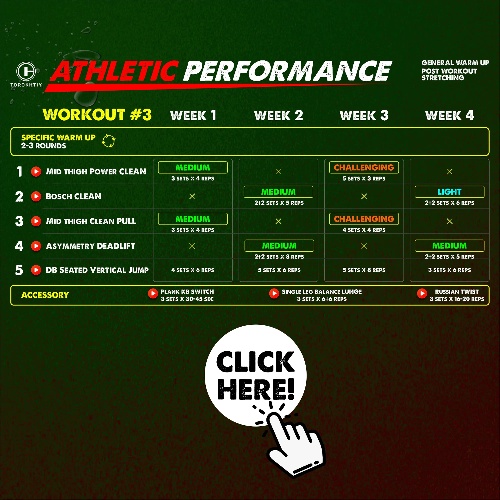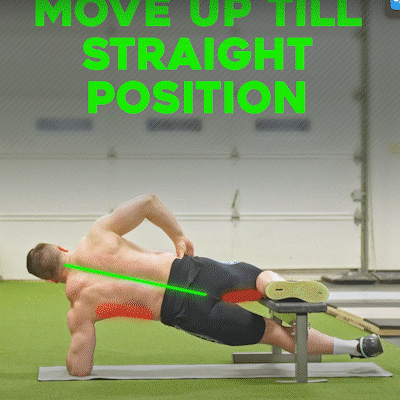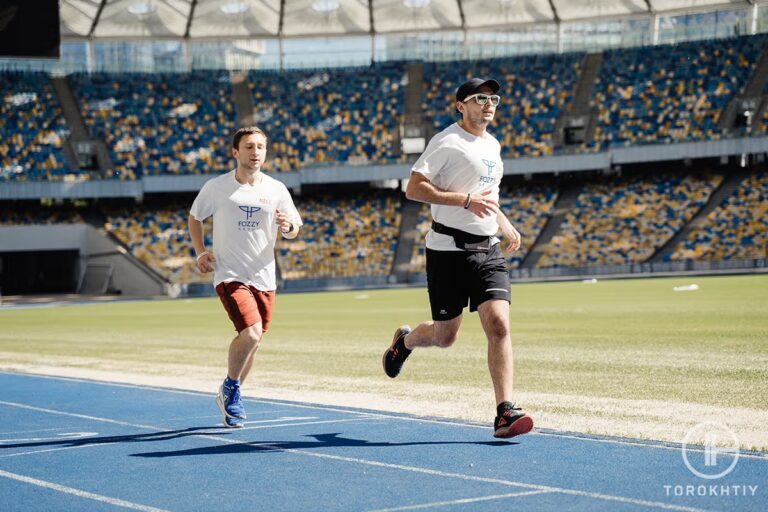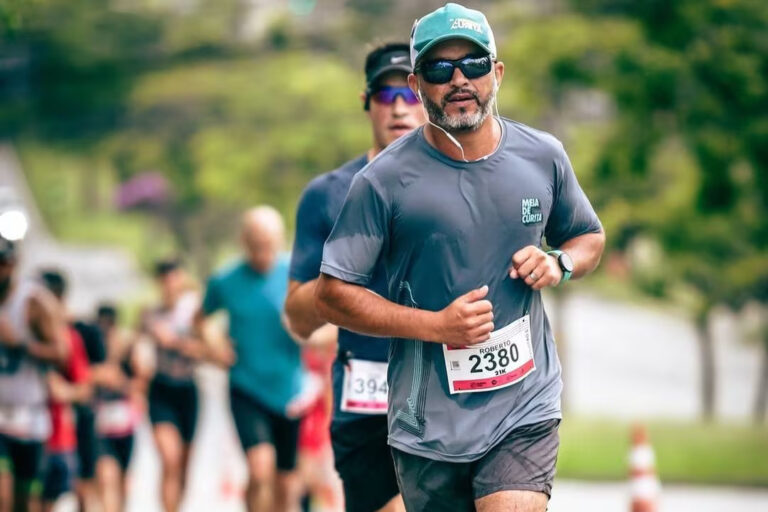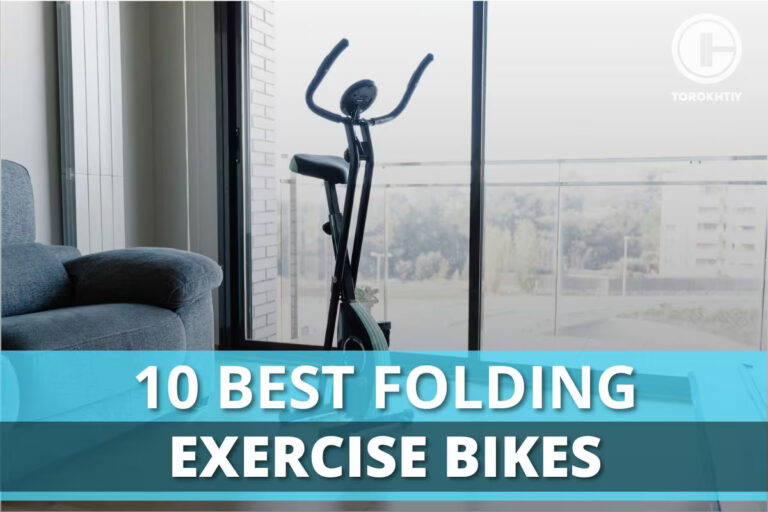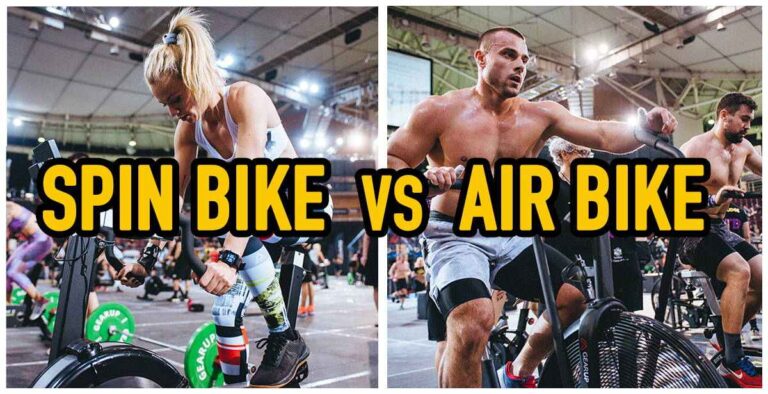Strength Training for Rowers (Detailed Program)
Reviewed by: Oleksiy Torokhtiy (21 years of Oly Lifting experience)
Rowing is classified as a power-endurance sport. This means that aerobic endurance and physical muscle power go hand in hand.
While you can build endurance on the boat or rowing machine, the same is not possible for muscle building.
Therefore, strength training for rowing becomes essential to your training routine. But why is it important to strength-train when it comes to rowing?
Strength training for rowing will help you build muscle mass, stabilize your joints, and increase power, leading to increased strokes per minute and fewer chances of injuries. Exercises such as squats, deadlifts, lunges, planks, and leg presses can significantly change your performance on the water.
Remember to strength train in an organized manner and no more than 2-3 times a week. You can join a gym, invest in some resistance bands, dumbbells, and kettlebells, and start your training at home.
This article will guide you through various strength training exercises, their benefits, and the essential equipment required. I’ve even listed a sample workout regime for you to start, so continue reading ahead.
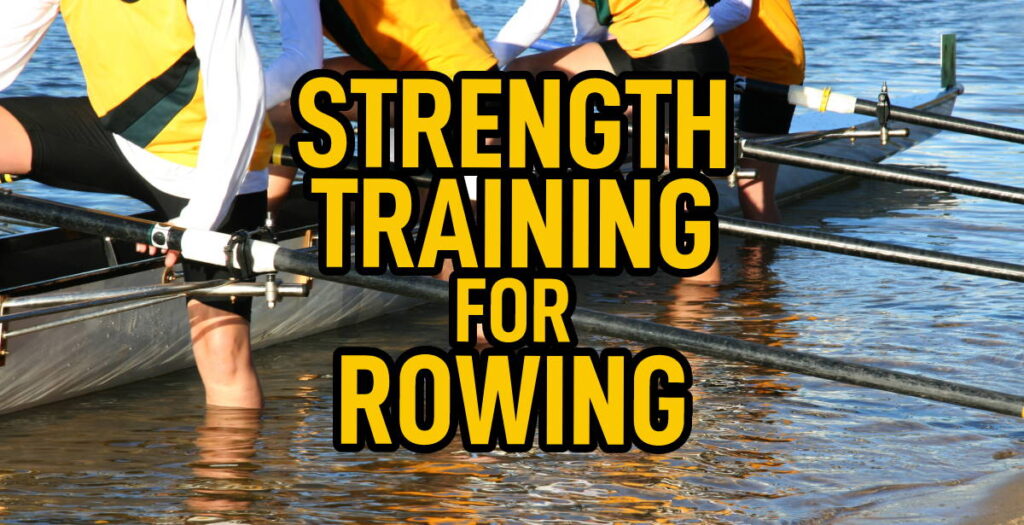
What’s Strength Training For Rowing?
Strength training for rowers means incorporating various exercises into your regular training routine that help build your muscle, resulting in better power output on the water.
From the outside, rowing is a minimal-effort sport that requires you to sit in place and move the oars back and forth. But if you’ve rowed even once, you know the truth is far from it.
Rowing is an extremely physically and mentally demanding sport that puts your entire body to work. Within your upper body, it puts the triceps and latissimus dorsi to work when pulling the oars back. You utilize your core to maintain proper form and your quadriceps and glutes in your lower body to generate power for your next stroke.
Now imagine that even if one of these muscles is weak, your performance on the water would be significantly impacted. On the other hand, if you’ve got good endurance and body strength, you will see a drastic improvement in your rowing performance.
Weight training for rowers is essential, especially for young rowers. Not only will it help improve your skills, but it also helps you grow athletically and physically. Whether you choose to persuade rowing professionally or not, you’ll undoubtedly benefit from the strength training for a lifetime.
Although, it is important to note that there is a fine line between abusive and controlled strength training. The former can be detrimental, especially regarding rowing. Regarding rowing, your primary focus should be on building strength and muscle in a controlled and focused manner. You needn’t be the heaviest lifter in the room to be a good rower.
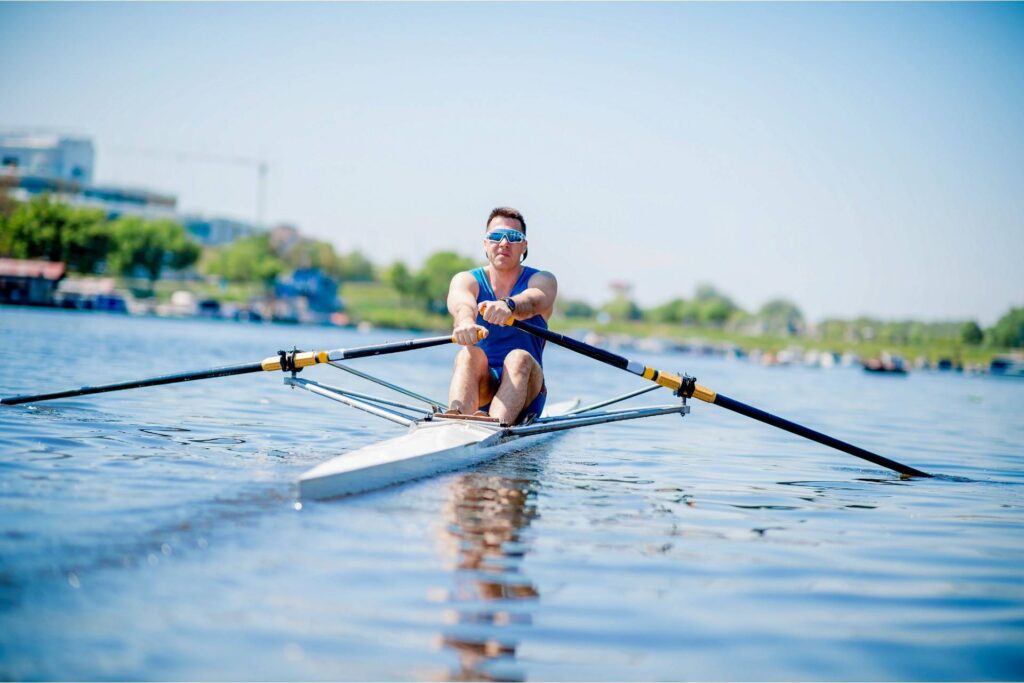
Benefits of Strength Training For Rowers
Building strength and endurance is crucial whether you’re a professional rower or just starting your rowing journey. Yes, most rowing is endurance, especially when spending 1-1.5 hours on the water.
You can build endurance simply by putting in extra hours on the water. But when building strength, you must step out of the boat and into the gym. The strength-building milestones that you can achieve within a weightlifting room or through asymmetrical core training, you absolutely cannot reach within the boat.
Incorporating strength training exercises into your training regime holds multiple benefits. Firstly, it helps increase raw strength development, which in turn helps increase endurance. Strength training also helps increase your power output, decreases the chances of injuries, and drastically improves your rowing performance.
Here are some of the benefits that rowers can get from strength training:
Increases Raw Strength Development
Raw strength naturally increases with age; for example, a 35-year-old will have greater raw strength than a 20-year-old. But if you strength train, you can speed up this natural strength development.
When rowing, it all comes down to how fast you can row and in how little time. Whether doing a 1k or a 2k, you can significantly increase your stroke-per-minute rate if you’ve got stronger muscles.
This is especially important for coastal rowers; even 15 minutes of coastal rowing puts significantly more load on your body than still water rowing of the same time duration.
For competitive rowers, increased muscle mass means you can perform more vigorous strokes, making the boat cover a greater distance with each stroke. So you’re putting in the same energy, but your boat is going faster.
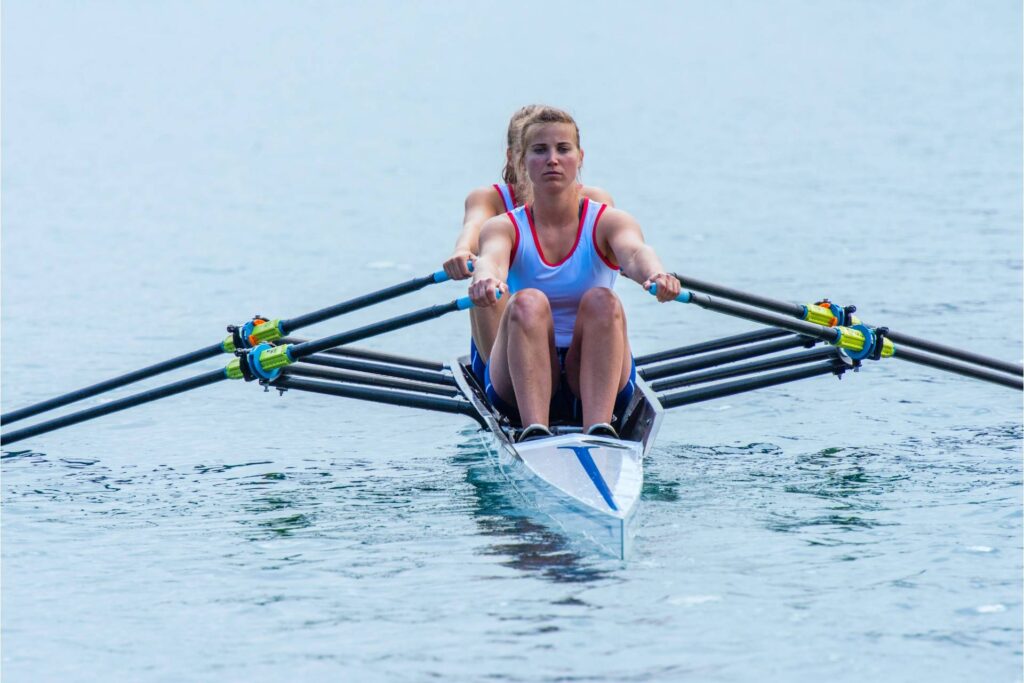
Better Endurance of Muscles
When you strength train, your muscle mass increases, so they can use and store more oxygen within their fibers. This means you can row for more extended periods before your muscles cramp.
This increased endurance of muscles is critical for rowers looking to participate in rowing marathons or triathlons. Further, for rowers wanting to lose excess fat, strength training can help them work out longer without fatigue.
Greater Power Output
Regardless of your stroke-per-minute rate, your boat will only travel faster if you generate efficient power through each stroke. Strength training helps ensure that your power output for each stroke remains high.
The power required for each stroke gets generated through your lower body and core. The gluteus muscles and the quadriceps femoris are the primary power generators within your lower body. So if these muscles are strong, you can generate greater power.
Your core, on the other hand, helps stabilize your entire body. Strong core muscles will help keep you stable and efficiently transfer power from your lower body to your upper extremities. This means that most of the power generated by your legs will get transferred to your arms, resulting in greater power output.
Reduced Risk of Injuries
As per a report by the University of Rochester, rib stress fractures, inflamed wrist tendons, and lower back and knee pain are amongst the most common rowing-related injuries.
A study by Massini et al. shows evidence of increased bone mineral density even among older adults that performed strength training. This means your risk of fracturing a rib or any other bone decreases when you strength train.
Further, multiple studies show the impact of strength training on the stability of tendons and ligaments. Rowing requires stable joints, so rowers need to work on this, especially during the off-season. Stable tendons and ligaments decrease pain and inflammation in lower back and knee.

Best Strength Training Exercises For Rowers
Rowing puts your entire body to work, so you must strength-train all major muscle groups from top to toe to truly see the results on the water.
Regardless of whichever rowing strength training routine you follow, ensure that you focus on your core strength, leg and hip strength, shoulder arms, and back strength.
For your legs, you can focus on squats, leg presses, step-ups, and lunges. The good old plank or Russian twist is your best friend for the core, whereas overhead presses, bench pulls, and push-ups are great for building upper body strength.
Here are some of the best strength training exercises for rowing that you can add to your training routine:
Squats
Rowing generates power through your legs, so you must have strong leg muscles to create more power with each row. And there’s no better way to strengthen the quads in your legs than through a good old squat.
You can oscillate between sumo squats, regular squats, or weighted squats based on the intensity of your workout.
Lunges
While squats mainly focus on your quadriceps muscle, lunges focus on the hamstring opposite the quads. When strength training, it is vital to work on the hamstrings, to minimize the risk of imbalance injuries.
Deadlifts
Like squats, deadlifts also strengthen your hamstrings, which is essential to maintain balance in both opposing muscle groups. It also helps to improve your glutes, core, back, and trapezius, making it the perfect total body exercise.
You can always start with low weights and increase your weights as you gain more strength.
Step Ups (Single Leg)
Step-ups also help to build lower body strength as they activate your glutes and quads. Both these muscles are vital for efficient power generation during rowing.
Leg Press
For those that like to work with machines, doing leg presses is a great way to work your glutes and quads. They also strengthen your hamstrings.
Planks
Planks; you either love them or hate them! But to build core strength, you must make them your best friend.
When you’re in a plank position, all your major core muscles get activated, which helps increase core stability. Start with a 30-second plank and increase the time as your core strengthens.
Russian Twists
Now here’s an exercise that we all can perform anywhere. Russian twists seem easy to do, so most people love doing them. But if your form isn’t proper, then the Russian twist wastes time.
When doing this exercise, start without weights and work on perfecting your form. Once the form is correct, add weights.
Push Ups
These are great for building upper body strength, and you don’t need weights. Your body weight is the weight. But ensure that your form is correct. Otherwise, you could injure yourself.
If you want to test your limits further, add weighted plates on your back or do a single-handed push-up.
Bench Press
The bench press is a great way to build upper arm strength since it puts your deltoids, triceps, and chest to work. Plus, perfecting the form is easier since you use dumbbells instead of a machine.
Beginners can start with lower weights and increase them as they build muscle.
Overhead Press
Overhead press targets your trapezius, deltoids, and pectoralis muscles, making it a great upper arm and shoulder exercise. A more muscular upper body means better-pulling motion and increased strokes per minute.
Key Factors in Rowers’ Strength Training Routine
Although strength training is crucial for rowing, it’s essential not to overdo it and limit it to twice or thrice a week. Rowers must ensure that they train in an organized manner and always strength train before endurance training if they wish to avoid injuries.
The 30-30 for 30 method is a great way to pace your strength training and prevent muscle fatigue.
Here are some key factors that you must keep in mind before starting your rowing strength training program:
Have Organized Training
A rower must focus on all five fitness factors, i.e., strength, endurance, power, technique, and balance. But it’s easy to jumble all the variables and not be able to improve any one of them properly.
Therefore, you must organize (or Periodize) your training routine. It may sound complicated, but it’s relatively easy and the most effective way to strength train for rowing.
You can start by focusing on two main fitness factors to do this. You can start working on your technique and strength in the first five weeks and then move on to endurance and balance. Multiple studies support this way of training and show optimal performance outputs through this method.
Endurance Training After Strength Training
There should be an 8-hour gap between strength and endurance training sessions to avoid muscle fatigue and joint injuries. But if you must train both succeedingly, start with strength training first.
Lifting your weights after a long endurance session on the water/erg increases your chances of getting injured during weight training. Although if you strength train and then go for endurance, you may not have the most fruitful rowing session, your chances of getting injured would decrease multiple folds.
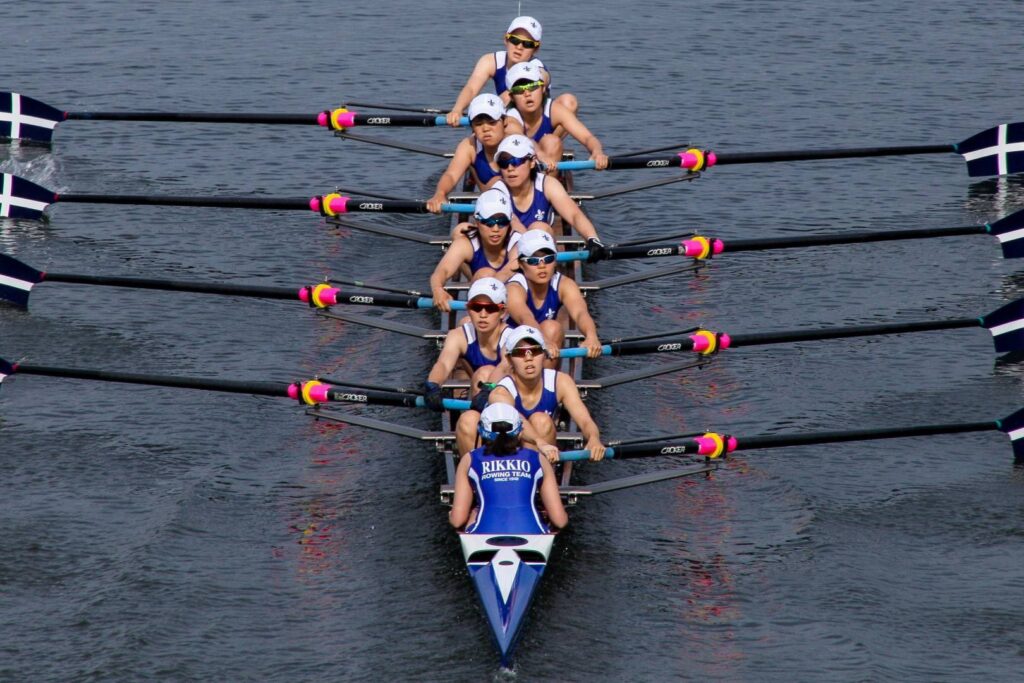
Follow the 30-30 for 30 Method
This is a popular method of strength training when it comes to rowing. The 30-30 for 30 system means 30 seconds on, 30 seconds off, for 30 minutes. This is a great way to train and build muscles while avoiding unnecessary muscle fatigue or failure.
Limit Strength Training to 2-3 Times a Week
According to multiple trainers and rowers, strength training 2-3 times a week yields optimal results. Some studies support this claim and show that increasing weekly training frequency does not improve results.
During the summer off-season and the winter pre-season, rowers can strength train a week thrice and prepare themselves for the upcoming competition. During this time, I like to focus on one part of the body per session, such as the arms or legs.
Limiting your strength training exercises to twice a week is best during the pring and fall competition season. I prefer full-body strength training in each session during the season.
Strength Training Program For Rowers
When starting your strength training program, remember you’re an athlete, not a heavy weightlifter. Your goal should not be to do the heaviest deadlift but the correct one.
Most rowers have stiff hips and backs, so a good strength training program should include a full-body workout that helps to relieve this stiffness. If you’re a beginner, I recommend starting with a warmup routine and slowly progressing to light mobility work.
Getting a personalized program from a professional coach is best. But if you prefer to do it yourself, here’s a sample program to get you started.
Warmup
- Light jogging on a treadmill for 3-5 mins
- Heel kicks 4 x 20
- High Knees 4 x 20
- Tin Man 2 x 20
Strength Training
- Pull-Ups 6-8 reps
- Yoga Push-ups 12-15 reps
- Bulgarian Split Squat 12-15 squats per leg
- Chest Supported Row 12-15 reps
- Squat Jump 10-12 reps
- Pass the Weight, High Plank 40-60 seconds
Cool Down
- Easy jogging for 3 minutes
- Foam Roll for 5 mins
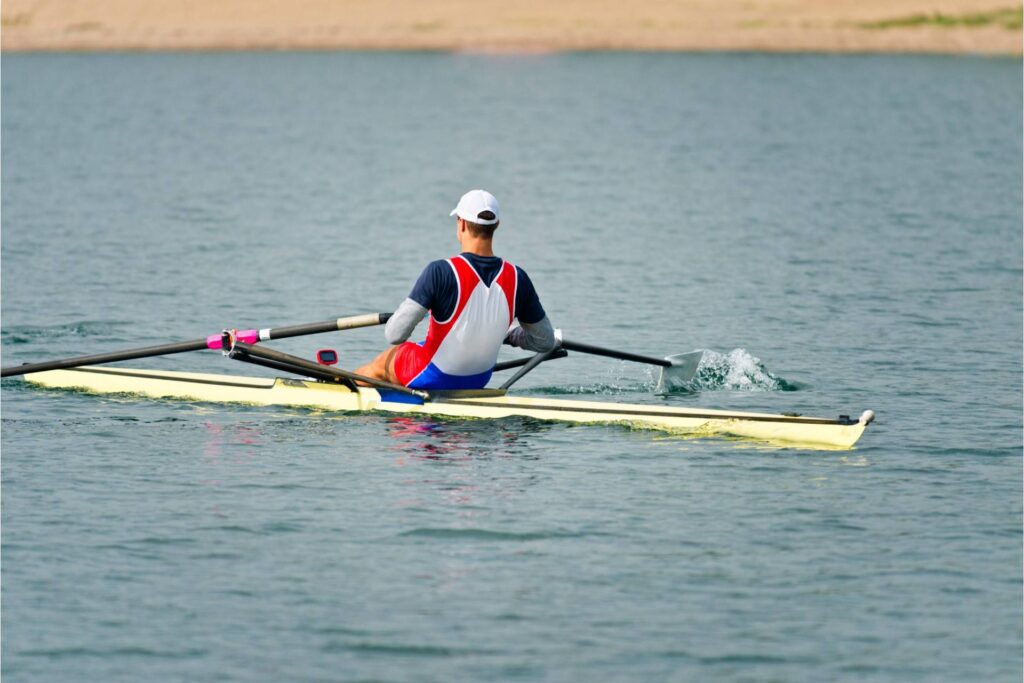
Essential Equipment You’ll Need
When it comes to rowing, you don’t need a lot of equipment to start strength training. Since most strength training consists of push-ups, planks, and squats, basic equipment such as resistance bands, dumbbells, and kettlebells are all you need.
Resistance Bands
It’s the most versatile and cheapest workout equipment out there. You can easily incorporate them into a series of exercises, such as squats, crab walks, and bent-over rows. They come in various resistance levels, so you can choose how much resistance you want to add to your exercise.
Dumbbells
They aren’t as cheap as resistance bands, but vital when working out. Invest in various weights; incorporate them into your squats, lunges, bench pulls, and other exercises.
Kettlebells
They simultaneously engage your arm, legs, shoulder, back, and abdominal muscles, making them ideal workout equipment for rowers. You can invest in various weights at once or buy them as you progress in your strength training regime.
FAQ
What Lifts Are Best For Rowers?
Although rowers can incorporate a series of lifts into their workout, deadlifts, Romanian deadlifts, batwing rows, and trap bar deadlifts are amongst the most common ones that show optimal results.
Does Weightlifting Help Rowers?
Weightlifting significantly helps rowers by increasing their muscle mass and strength. This leads to better performance on the water and decreased chances of injuries.
How Often Should a Rower Lift Weights?
It’s ideal for rowers to stick to weight lifting regimes 2-3 times a week as this shows optimal results. There’s also no evidence to prove that increasing your weekly lifting frequency also improves your performance.
Conclusion
In conclusion, strength training is essential for better performance and improved power output when rowing, significantly decreasing your chances of injury.
While rowers may be tempted to lift the heaviest weight in the gym, rowers should do everything in moderation regarding strength training. A variation of squats with moderate weights, push-ups, and pull-ups is your saving grace in the gym.
You’re on the right track as long as you follow the 30-30 for 30 rule and do strength before endurance training 2-3 times a week. Also, start with a warm-up and end with a cool-down to get the most out of your regime.
If you’re following a strength training regime for rowing that seems to work, share it with us in the comments.
Also read:
- Best Lifts for Baseball Players
- Strength Training for Hockey Players
- Strength Training for Swimmers
- Strength Training for Bjj
- Strength Training for Cyclists
- Firefighter Workout Plan
- Best Exercises for Kayaking
References:
- Rowing Injuries // Rochester: https://www.urmc.rochester.edu/orthopaedics/sports-medicine/rowing-injuries.cfm
- The Effect of Resistance Training on Bone Mineral Density in Older Adults // NCBI: https://www.ncbi.nlm.nih.gov/pmc/articles/PMC9222380/
- Weekly Training Frequency Effects on Strength Gain // NCBI: https://www.ncbi.nlm.nih.gov/pmc/articles/PMC6081873/
Why Trust Us?
With over 20 years in Olympic Weightlifting, our team does its best to provide the audience with ultimate support and meet the needs and requirements of advanced athletes and professional lifters, as well as people who strive to open new opportunities and develop their physical capabilities with us.
By trusting the recommendations of our certified experts in coaching, nutrition, dietology, and sports training programming, as well as scientific consultants, and physiotherapists, we provide you with thorough, well-considered, and scientifically proven content. All the information given in the articles concerning workout programming, separate exercises, and athletic performance, in general, is based on verified data. We ensure that you can rely on our professionals’ pieces of advice and recommendations that can be treated as personalized ones which will benefit you and fully meet your needs.
The product testing process is described in more detail here
Author: Sergii Putsov
Head of Sport Science, PhD
Best Results: Snatch – 165 kg,
C&J – 200 kg
Sergii Putsov, Ph.D., is a former professional weightlifter and National team member, achieving multiple medals in the 94 kg weight category at national competitions. With a Master’s degree in “Olympic & Professional Sport Training” and a Sport Science Ph.D. from the International Olympic Academy, Greece, Sergii now leads as the Head of Sport Science. He specializes in designing training programs, writing insightful blog articles, providing live commentary at international weightlifting events, and conducting educational seminars worldwide alongside Olympic weightlifting expert Oleksiy Torokhtiy.
Reviewed by: Oleksiy Torokhtiy
Olympic Weightlifting Champion
Best Results: Snatch – 200 kg,
C&J – 240 kg
Oleksiy Torokhtiy is a professional athlete boasting 20 years of experience in Olympic weightlifting. With multiple European and World titles under his belt, he has showcased his prowess in two Olympic Games (Beijing 2008 and London 2012). Upon concluding his illustrious career, Oleksiy dedicated himself to coaching. By 2022, he had conducted over 200 weightlifting seminars worldwide. He is the visionary behind an international sportswear and accessories brand known for its motto, “Warm Body Cold Mind.” Additionally, he is an esteemed author and the creator of a series of training programs and eBooks.

